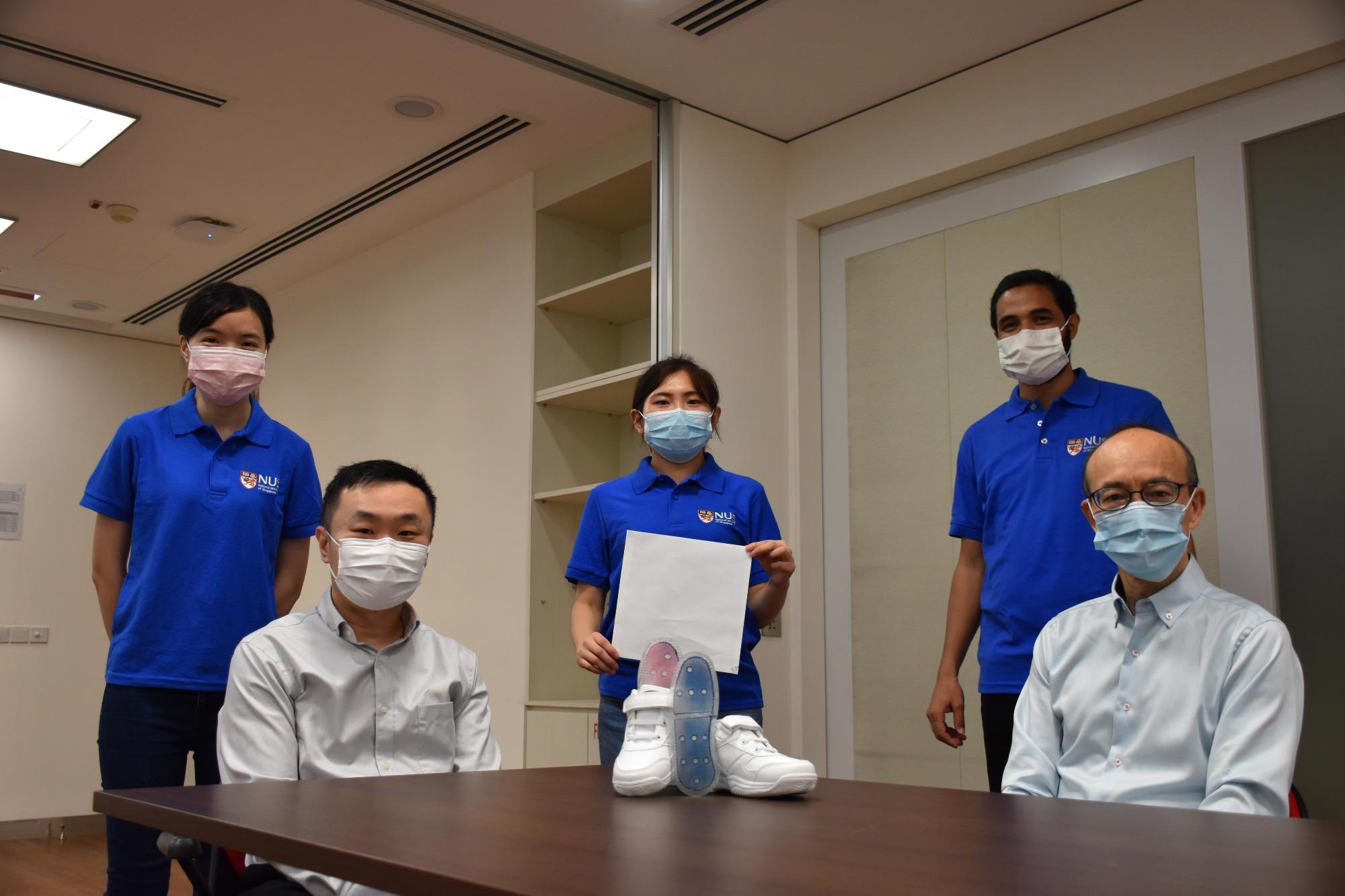Jan 4 2021
Scientists at the National University of Singapore (NUS) have developed an innovative film that evaporates sweat from the skin more effectively to keep people cool and comfortable while performing exercises.
 An NUS research team led by Assistant Professor Tan Swee Ching (seated, left) and Professor Ding Jun (seated right) has developed a novel film that is extremely effective in evaporating sweat from our skin. Promising applications include shoe insoles and linings, as well as underarm pads for sweat absorption. Image Credit: National University of Singapore.
An NUS research team led by Assistant Professor Tan Swee Ching (seated, left) and Professor Ding Jun (seated right) has developed a novel film that is extremely effective in evaporating sweat from our skin. Promising applications include shoe insoles and linings, as well as underarm pads for sweat absorption. Image Credit: National University of Singapore.
Moreover, the moisture harvested from human sweat can be employed to power wearable electronic devices such as fitness trackers and watches.
Sweat is mostly composed of water. When water is evaporated from the skin surface, it lowers the skin temperature and we feel cooler. In our new invention, we created a novel film that is extremely effective in evaporating sweat from our skin and then absorbing the moisture from sweat. We also take this one step further—by converting the moisture from sweat into energy that could be used to power small wearable devices.
Tan Swee Ching, Research Team Leader and Assistant Professor, Department of Material Science and Engineering, National University of Singapore
Two hygroscopic chemicals—cobalt chloride and ethanolamine—are the key ingredients of the novel thin film. Aside from exhibiting a superior moisture-absorbing property, this film can quickly liberate water upon exposure to sunlight. Moreover, it can even be “regenerated” and reused over 100 times.
To ensure complete use of the sweat that is absorbed, the NUS researchers have also developed a wearable energy harvesting device that includes eight electrochemical cells (ECs), where the novel film is used as the electrolyte. Each of the ECs can produce nearly 0.57 V of electricity when they absorb moisture.
The overall energy harnessed by the device is adequate to drive a light-emitting diode. This proof-of-principle demonstration shows the potential of battery-less wearables driving with human sweat.
Absorbing Moisture for Personal Comfort
Traditional hygroscopic materials such as silica gels and zeolites exhibit bulk solid structures and low water uptake, which render them inappropriate for absorbing moisture from evaporated sweat. By contrast, the new moisture-absorbent film created by the NUS team absorbs 15 times more moisture and does this 6 times more rapidly compared to traditional materials.
Besides, this novel film exhibits a change in color—from blue to purple, and finally pink—when it absorbs moisture. This aspect can be employed as an indicator of the degree of moisture absorption.
The film was packaged into waterproof and breathable polytetrafluoroethylene (PTFE) membranes that are flexible and commonly used in clothing. The NUS team successfully demonstrated the use of the moisture-absorption film for a shoe insole, shoe lining, and underarm pad.
Underarm sweating is embarrassing and frustrating, and this condition contributes to the growth of bacteria and leads to unpleasant body odour. Accumulation of perspiration in the shoes could give rise to health problems such as blisters, calluses, and fungal infections.
Tan Swee Ching, Research Team Leader and Assistant Professor, Department of Material Science and Engineering, National University of Singapore
“Using the underarm pad, shoe lining and shoe insole embedded with the moisture-absorbing film, the moisture from sweat evaporation is rapidly taken in, preventing an accumulation of sweat and provides a dry and cool microclimate for personal comfort,” added Asst Prof. Tan.
The prototype for the shoe insole was created using 3D printing. The material used is a mixture of soft polymer and hard polymer, thus providing sufficient support and shock absorption.
Ding Jun, Research Team Co-Leader and Professor, Department of Material Science and Engineering, National University of Singapore
The NUS researchers are looking forward to working with companies to include the innovative moisture-absorption film in consumer products.
Journal Reference:
Zhang, X., et al. (2020) Super-hygroscopic film for wearables with dual functions of expediting sweat evaporation and energy harvesting. Nano Energy. doi.org/10.1016/j.nanoen.2020.104873.